
Saint-Marc: The Pearl of the Artibonite Coast
Discover Saint-Marc, Haiti's hidden gem on the Artibonite Coast, boasting beautiful beaches, rich history, and vibrant culture for an unforgettable travel experience.
Saint-Marc, nestled along the picturesque Artibonite Coast, offers a unique blend of natural beauty, rich history, and vibrant culture that makes it a must-visit destination in Haiti. The city is known for its stunning beaches, where the golden sands meet the turquoise waters of the Caribbean Sea, providing a perfect backdrop for relaxation and water activities. Visitors can indulge in swimming, snorkeling, and sunbathing, while enjoying the refreshing sea breeze and the warm tropical sun. Aside from its natural allure, Saint-Marc is steeped in history. The city played a significant role during the Haitian Revolution and is home to several historical landmarks. A visit to the Fort Drouet offers a glimpse into the past with its well-preserved structures and panoramic views of the surrounding landscape. The lively local markets are another highlight, where tourists can experience the vibrant Haitian culture, taste local delicacies, and purchase handmade crafts and souvenirs. Saint-Marc's culinary scene is another highlight, with a variety of local restaurants offering traditional Haitian dishes. From fresh seafood to flavorful stews, the city's cuisine is a delightful fusion of African, French, and Caribbean influences. As the sun sets, the city's nightlife comes alive with music and dance, reflecting the joyous spirit of its people. Whether you're exploring the historical sites, lounging on the beach, or savoring the local flavors, Saint-Marc promises an unforgettable experience for every traveler.
Local tips in Saint-Marc
- Visit early in the morning to the local markets for the freshest produce and authentic Haitian crafts.
- Bring cash in small denominations, as many local vendors may not accept credit cards.
- Explore the historical Fort Drouet for panoramic views and a deep dive into the city’s revolutionary past.
- Try the local seafood dishes, which are a highlight of Saint-Marc's culinary offerings.
- Wear comfortable shoes as you may do a lot of walking, especially when exploring historical sites and markets.
Saint-Marc: The Pearl of the Artibonite Coast
Saint-Marc, nestled along the picturesque Artibonite Coast, offers a unique blend of natural beauty, rich history, and vibrant culture that makes it a must-visit destination in Haiti. The city is known for its stunning beaches, where the golden sands meet the turquoise waters of the Caribbean Sea, providing a perfect backdrop for relaxation and water activities. Visitors can indulge in swimming, snorkeling, and sunbathing, while enjoying the refreshing sea breeze and the warm tropical sun. Aside from its natural allure, Saint-Marc is steeped in history. The city played a significant role during the Haitian Revolution and is home to several historical landmarks. A visit to the Fort Drouet offers a glimpse into the past with its well-preserved structures and panoramic views of the surrounding landscape. The lively local markets are another highlight, where tourists can experience the vibrant Haitian culture, taste local delicacies, and purchase handmade crafts and souvenirs. Saint-Marc's culinary scene is another highlight, with a variety of local restaurants offering traditional Haitian dishes. From fresh seafood to flavorful stews, the city's cuisine is a delightful fusion of African, French, and Caribbean influences. As the sun sets, the city's nightlife comes alive with music and dance, reflecting the joyous spirit of its people. Whether you're exploring the historical sites, lounging on the beach, or savoring the local flavors, Saint-Marc promises an unforgettable experience for every traveler.
When is the best time to go to Saint-Marc?
Iconic landmarks you can’t miss
Sans Souci Palace
Discover the enchanting ruins of Sans Souci Palace, a UNESCO World Heritage site that embodies Haiti's rich history and breathtaking landscapes.
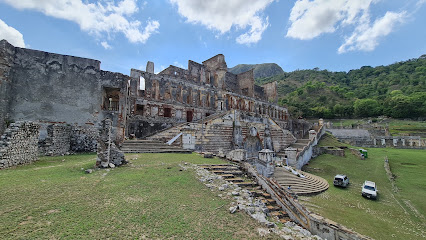
Fort Jacques et Fort Alexandre
Uncover the rich history and breathtaking views at Fort Jacques et Fort Alexandre, a must-visit fortress in Haiti's picturesque hills.

Musée Ogier-Fombrun
Explore the cultural heritage of Haiti at Musée Ogier-Fombrun, a local history museum in Montrouis showcasing the nation's rich past.
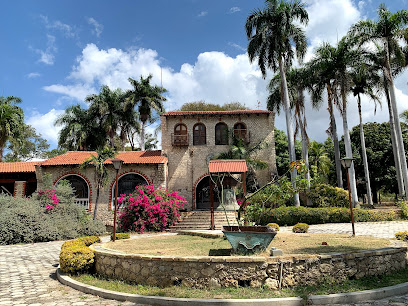
Parc Historique De La Canne À Sucre
Discover the rich history and serene beauty of Parc Historique De La Canne À Sucre, a memorial park celebrating Haiti's sugar cane heritage.
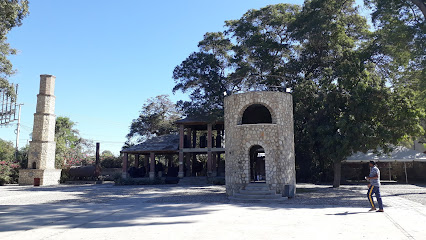
Jean-Jacques Dessalines Monument
Explore the rich history of Haiti at the Jean-Jacques Dessalines Monument, a symbol of independence and national pride in Port-au-Prince.

Place Bouteille
Experience the vibrant energy and rich culture of Haiti at Place Bouteille, Gonaïves' premier amusement center for fun and adventure.

Tour 2004 Bicentennial Monument
Explore the rich heritage of Haiti at the Tour 2004 Bicentennial Monument, a stunning landmark in Port-au-Prince celebrating freedom and resilience.
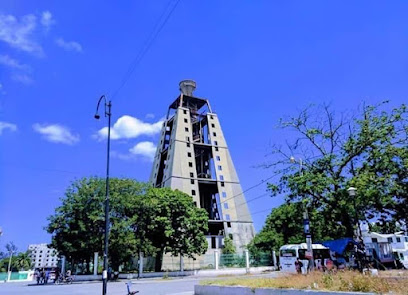
Saint Marc Haïti
Explore Saint Marc, Haiti: A coastal paradise of stunning beaches, rich culture, and vibrant history waiting for your discovery.

La Colline Hôtel
Explore the charm of Saint-Marc at La Colline Hôtel, your peaceful retreat in the heart of Haiti's vibrant coastal culture.

Pont Rouge
Explore the vibrant history and culture of Haiti at Pont Rouge, a must-visit historical site in Port-au-Prince.
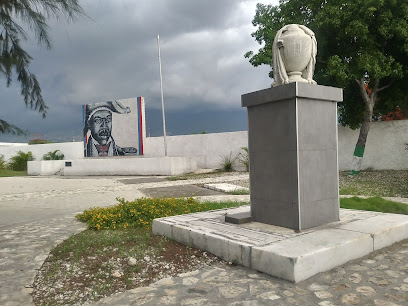
Fort Blockhauss
Explore the rich history and breathtaking views at Fort Blockhauss in Saint-Marc, Haiti, a must-visit for history enthusiasts and nature lovers alike.

Jean-Jacques Dessalines Statue
Explore the Jean-Jacques Dessalines Statue in Cap-Haïtien, a monumental tribute to Haiti's revolutionary leader and a symbol of national pride.

Fort Drouet
Explore Fort Drouet, an archaeological gem in Haiti, where history and breathtaking landscapes intertwine for an unforgettable experience.

Fort Diamant
Discover the historic Fort Diamant in Saint-Marc, a majestic fortress offering stunning views and a glimpse into Haiti's rich colonial past.
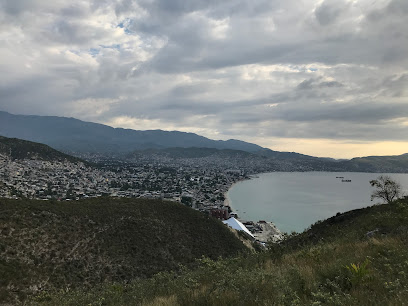
DELS INSTITUTE
Enhance your English skills in the vibrant atmosphere of Dels Institute, Saint-Marc, where language meets culture.

Unmissable attractions to see
Labadee Haïti
Experience the beauty and adventure of Labadee, Haiti, a tropical paradise with stunning beaches and rich cultural experiences ideal for every traveler.

Champ de Mars
Experience the vibrant heart of Port-au-Prince at Champ de Mars, a blend of history, culture, and green space.

Place Saint-Pierre
Explore the vibrant greenery and cultural heart of Port-au-Prince at Place Saint-Pierre, a serene park perfect for relaxation and local experiences.

Laferriere Citadel
Discover the historic Laferriere Citadel, a UNESCO World Heritage site showcasing Haiti's rich history and stunning mountain vistas.

Notre-Dame of Cap-Haitian Cathedral
Explore the stunning Notre-Dame of Cap-Haitien Cathedral, a masterpiece of Gothic architecture and a beacon of Haiti's cultural heritage.
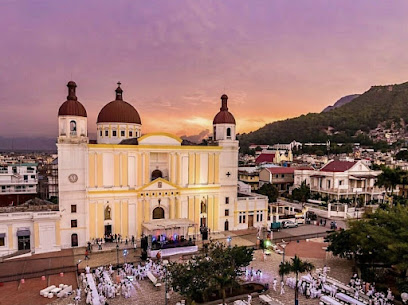
Sans Souci Palace
Discover the historic beauty and cultural significance of Sans Souci Palace, a UNESCO World Heritage site in Milot, Haiti, reflecting the nation's rich heritage.

Heroes Monument of Vertières
Explore the Heroes Monument of Vertières in Cap-Haitien, a powerful memorial park celebrating Haiti's history and the heroes of the independence struggle.

Bassin Bleu
Discover the breathtaking beauty of Bassin Bleu in Jacmel, Haiti, a stunning natural attraction with crystal-clear pools and cascading waterfalls.
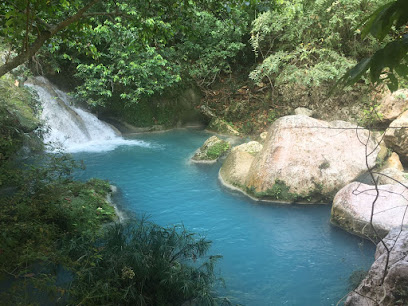
Musée Ogier-Fombrun
Discover Haiti's vibrant past at Musée Ogier-Fombrun, a local history museum in Montrouis showcasing captivating artifacts and stories.

Chutes de Saut d'Eau, Centre, Haiti
Explore the breathtaking beauty of Chutes de Saut d'Eau, Haiti's stunning waterfall surrounded by lush tropical landscapes.

Urbain de Martissant - Habitation Leclerc National Park
Explore the lush landscapes and vibrant wildlife of Urbain de Martissant - Habitation Leclerc National Park, a serene retreat in Carrefour, Haiti.

In Martissant Park
Explore Martissant Park in Carrefour, Haiti, a vibrant destination for nature lovers and cultural enthusiasts, packed with activities and local charm.

Sainte Anne Church
Explore the architectural beauty and serene atmosphere of Sainte Anne Church in Port-au-Prince, a true reflection of Haiti's spiritual heritage.
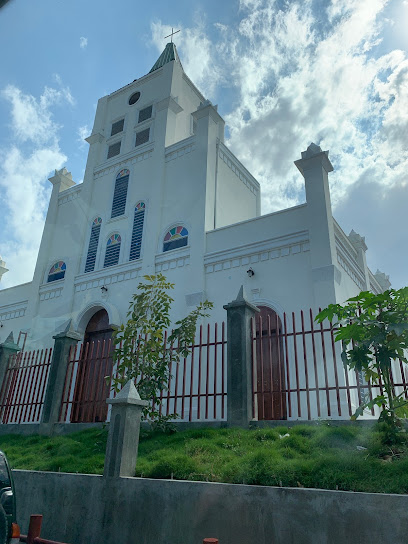
Place Publique De Cabaret
Experience the tranquility and local charm of Place Publique De Cabaret, a perfect retreat in the heart of Cabaret, Haiti.

La Visite National Park
Discover the natural wonders of La Visite National Park in Haiti, where lush landscapes meet rich biodiversity in an unforgettable outdoor adventure.

Essential places to dine
Kay Foun
Savor authentic Haitian cuisine at Kay Foun in Saint-Marc – where every dish tells a story.

Stop Ma
Discover the flavors of Haiti at Stop Ma in Saint-Marc - where delicious cuisine meets convenience with market and currency exchange services.

Sympa Resto
Discover the flavors of Haiti at Sympa Resto in Saint-Marc - your go-to destination for authentic Haitian cuisine.
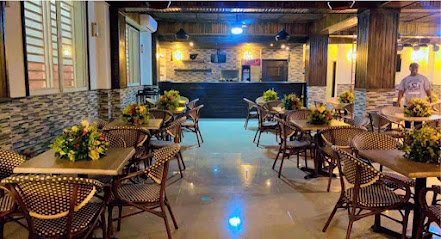
Excell Hotel Bar Restaurant
Discover exquisite dining at Excell Hotel Bar Restaurant in Saint-Marc – where local flavors meet exceptional hospitality.

Villanne-Marie
Experience authentic Haitian cuisine at Villanne-Marie in Saint-Marc – a culinary journey that delights your senses.

Taīno bar
Experience authentic Haitian cuisine at Taīno Bar in Saint-Marc - where every meal tells a story!

Dukens Merzius
Experience authentic Haitian cuisine at Dukens Merzius in Saint-Marc—where every dish tells a story.

Club 2000 Restaurant
Discover authentic Haitian flavors at Club 2000 Restaurant in Saint-Marc, where every dish tells a story of culinary heritage.

L'escale Creole
Discover authentic Haitian cuisine at L'escale Creole in Pierre Payen – where every dish tells a story.

109 Bar
Discover authentic Haitian flavors at 109 Bar in Saint-Marc - where every meal tells a story.

Le Figuier Restauroute Bar & Grill
Discover authentic Haitian flavors at Le Figuier Restauroute Bar & Grill along RN1 - a must-visit culinary stop for every traveler.
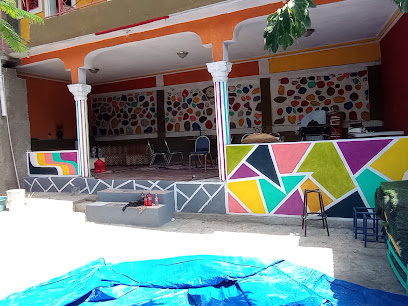
ZOBAN TAKE OUT
Discover authentic Haitian cuisine at Zoban Take Out in Saint-Marc - where every dish tells a story.

Paradis Infini
Experience exquisite local flavors at Paradis Infini in Saint-Marc - where every meal is a celebration of Haitian culinary art.

Cristal Bar Restaurant
Discover authentic Haitian flavors at Cristal Bar Restaurant in Saint-Marc, where culinary tradition meets vibrant atmosphere.
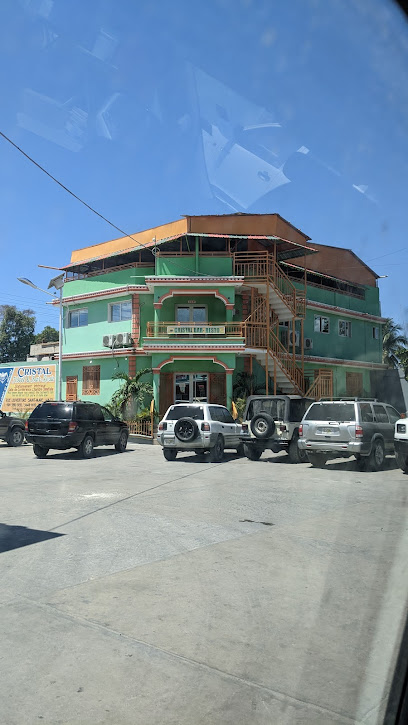
BERLENTZ KAY PANOU BAR RESTO MULTISERVICES
Experience authentic Haitian cuisine at Berlentz Kay Panou Bar Resto Multiservices in Saint-Marc - where flavor meets hospitality.

Markets, malls and hidden boutiques
Ginou Super Market
Explore the vibrant culture of Saint-Marc at Ginou Super Market, where local flavors and unique crafts come together in a lively shopping experience.

SCD SuperMarket (2)
Explore the vibrant flavors of Haiti at SCD SuperMarket in Saint-Marc, your gateway to local and international grocery delights.

SCD SuperMarket S A
Explore local flavors and everyday essentials at SCD SuperMarket S A in Saint-Marc, where vibrant culture meets convenience.

Bon Jean Super Market
Explore the eclectic flavors of Haiti at Bon Jean Super Market, a gourmet grocery store in Saint-Marc offering local delicacies and culinary treasures.

Fréçyneau
Visit Fréçyneau Supermarket in Saint-Marc for an authentic Haitian shopping experience with local flavors and cultural insights.

Le coin market
Experience the vibrant atmosphere of Le Coin Market in Saint-Marc, where local culture, fresh produce, and unique crafts come together in a lively shopping environment.

Sans Complex Boutique
Discover unique fashion and artisan crafts at Sans Complex Boutique in the heart of Saint-Marc, Haiti, where local culture meets stylish shopping.

Alténor's Boutik
Experience the delightful explosion of flavors at Alténor's Boutik, the charming popcorn store in Saint-Marc that turns a classic snack into a gourmet treat.

CLP Charles Liqueur Store et Parfumerie
Explore the unique offerings of CLP Charles Liqueur Store et Parfumerie in Saint-Marc, where local liqueurs and perfumes create unforgettable shopping experiences.

sackenhack
Discover a unique selection of home goods at Sackenhack in Saint-Marc, where local craftsmanship meets vibrant shopping experiences.

La scierie
Explore La Scierie, a lively shopping mall in Saint-Marc, where local culture meets modern shopping and dining experiences.

Shekyma boutique
Discover the sweet taste of Haiti at Shekyma Boutique, where artisanal cookies meet local flavors in a charming setting.

Saint Marc
Explore the delightful Saint Marc coffee shop in Saint-Marc, Haiti, and indulge in rich local flavors and a warm atmosphere.

Kay majori boutik
Explore the rich tapestry of Haitian culture at Kay Majori Boutik, where local craftsmanship meets unique shopping in the heart of Saint-Marc.

Sympa Agency
Experience the essence of local shopping at Sympa Agency in Saint-Marc, where vibrant culture meets a diverse range of retail offerings.

Essential bars & hidden hideouts
Stop Ma
Discover the vibrant culinary scene at Stop Ma in Saint-Marc, a perfect blend of local flavors and a lively atmosphere for every traveler.

Sympa Resto
Experience the authentic flavors of Haiti at Sympa Resto in Saint-Marc, where delicious cuisine meets warm hospitality.

Excell Hotel Bar Restaurant
Discover the vibrant flavors and warm hospitality at Excell Hotel Bar Restaurant in Saint-Marc, Haiti, where culinary delights meet a cozy atmosphere.

Taīno bar
Discover the vibrant flavors of Haiti at Taīno Bar in Saint-Marc, where authentic cuisine meets lively atmosphere.
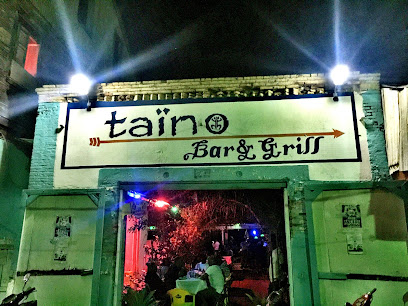
279 Lounge
Discover the lively ambiance of 279 Lounge in Saint-Marc, where refreshing cocktails meet local culture in an unforgettable nightlife experience.

The Corner Bar
Discover the essence of Saint-Marc's nightlife at The Corner Bar, a lively live music venue featuring local talent and a vibrant atmosphere.

Cristal Bar Restaurant
Dive into the flavors of Haiti at Cristal Bar Restaurant, where traditional cuisine meets a vibrant atmosphere in Saint-Marc.

BERLENTZ KAY PANOU BAR RESTO MULTISERVICES
Discover the authentic flavors of Haiti at Berlentz Kay Panou Bar Resto Multiservices, a local gem in the heart of Saint-Marc.

Sarah's Place
Discover the vibrant nightlife at Sarah's Place, a lively bar in Saint-Marc offering a mix of local drinks and an inviting atmosphere.

Le Goût Bar Resto
Discover authentic Haitian flavors at Le Goût Bar Resto in Saint-Marc, where local dishes meet vibrant atmosphere for an unforgettable dining experience.

Elec Hôtel Bar-Resto
Experience the blend of comfort and local flavor at Elec Hôtel Bar-Resto in Saint-Marc, Haiti.

Inet Technology Central
Discover the vibrant blend of dining and decor at Inet Technology Central in Saint-Marc, where local flavors meet stylish furniture.

TTC-FastFood
Experience the bustling energy and delicious fast-food delights at TTC-FastFood, the top culinary bar in Saint-Marc, Haiti.

Saint Marc
Experience the local coffee culture at Saint Marc's charming coffee shop, a perfect retreat for tourists exploring Haiti's vibrant coastal town.

Saint-Marc
Discover the ultimate relaxation experience in Saint-Marc's premier beauty salon, offering exceptional services for tourists looking to unwind and rejuvenate.

Local Phrases
-
- HelloAllo
[ah-loh] - GoodbyeOrevwa
[oh-rev-wah] - YesWi
[wee] - NoNon
[nohn] - Please/You're welcomeTanpri
[tahn-pree] - Thank youMèsi
[meh-see] - Excuse me/SorryEskize mwen
[es-kee-zay mwen] - How are you?Kijan ou ye?
[kee-jahn oo yeh] - Fine. And you?Byen. E ou?
[byehn. ay oo] - Do you speak English?Eske ou pale angle?
[es-kay oo pahl ahn-glay] - I don't understandMwen pa konprann
[mwen pah kohn-prahn]
- HelloAllo
-
- I'd like to see the menu, pleaseMwen ta renmen wè meni an, tanpri
[mwen tah ren-mehn weh meh-nee ahn tahn-pree] - I don't eat meatMwen pa manje vyann
[mwen pah mahn-jay vee-ahn] - Cheers!Santé!
[sahn-tay] - I would like to pay, pleaseMwen ta renmen peye, tanpri
[mwen tah ren-mehn pay-yeh tahn-pree]
- I'd like to see the menu, pleaseMwen ta renmen wè meni an, tanpri
-
- Help!Edem!
[ay-dem] - Go away!Ale!
[ah-lay] - Call the Police!Rele Polis la!
[reh-lay poh-lees lah] - Call a doctor!Rele yon doktè!
[reh-lay yohn dohk-tay] - I'm lostMwen pèdi mwen
[mwen pay-dee mwen] - I'm illMwen malad
[mwen mah-lahd]
- Help!Edem!
-
- I'd like to buy...Mwen ta renmen achte...
[mwen tah ren-mehn asht-ay] - I'm just lookingMwen jis gade
[mwen zhees gah-day] - How much is it?Konbyen li ye?
[kohn-byen lee yeh] - That's too expensiveSa twò chè
[sah twah sheh] - Can you lower the price?Eske ou ka ba pri a?
[es-kay oo kah bah pree ah]
- I'd like to buy...Mwen ta renmen achte...
-
- What time is it?Kisa lè li ye?
[kee-sah lay lee yeh] - It's one o'clockLi gen yon lè
[lee gehn yohn lay] - Half past (10)Demi pase (10)
[deh-mee pah-say] - MorningMaten
[mah-ten] - AfternoonApremidi
[ah-pray-mee-dee] - EveningAswè
[ah-sway] - YesterdayYe
[yeh] - TodayJodi a
[joh-dee ah] - TomorrowDemen
[deh-men] - 11
[1] - 22
[2] - 33
[3] - 44
[4] - 55
[5] - 66
[6] - 77
[7] - 88
[8] - 99
[9] - 1010
[10]
- What time is it?Kisa lè li ye?
-
- Where's a/the...?Ki kote...?
[kee koh-tay] - What's the address?Kisa adres la?
[kee-sah ah-drehs lah] - Can you show me (on the map)?Eske ou ka montre m 'yo (sou kat la)?
[es-kay oo kah mohn-tray m oh (soo kaht lah)] - When's the next (bus)?Kilè pwochen an ye?
[kee-lay pwo-shen ahn yeh] - A ticket (to ....)Yon tikè (pou ....)
[yohn tee-kay (poo)]
- Where's a/the...?Ki kote...?
History of Saint-Marc
-
Saint-Marc was founded in 1695 by the French during their colonial occupation of Saint-Domingue, now known as Haiti. The town was established as an important coastal settlement and quickly became a hub for trade and commerce due to its strategic location on the Gulf of Gonâve.
-
During the 18th century, Saint-Marc became a significant center for sugar production. Plantations around the town thrived on the forced labor of enslaved Africans. The wealth generated through the sugar trade contributed to the town's growth and the construction of grand colonial buildings, some of which still stand today.
-
Saint-Marc played a crucial role in the Haitian Revolution, which began in 1791. The town saw numerous battles and uprisings as enslaved Africans and free people of color fought against French colonial rule. Key revolutionary leaders, including Toussaint Louverture and Jean-Jacques Dessalines, were active in the region.
-
After Haiti gained independence in 1804, Saint-Marc continued to develop as an important port town. The economic activities shifted from colonial plantation agriculture to more diverse forms of trade and industry. The town's infrastructure improved, and it became a significant contributor to the country's economy.
-
In 1849, Saint-Marc was the site of a notable battle during the Haitian civil war. The conflict was between the forces of Faustin Soulouque, who declared himself Emperor Faustin I, and his opponents. The battle resulted in significant casualties and highlighted the ongoing political instability in Haiti during that period.
-
Today, Saint-Marc is a vibrant town known for its cultural heritage, bustling markets, and historical architecture. The town hosts various cultural festivals and events that celebrate its rich history and the diverse influences that have shaped it over the centuries. It remains a vital port and a gateway to exploring the natural beauty of the surrounding region.
Saint-Marc Essentials
-
Saint-Marc is located on the western coast of Haiti. The nearest international airport is Toussaint Louverture International Airport in Port-au-Prince, approximately 95 kilometers away. From Port-au-Prince, you can take a taxi or a bus to Saint-Marc. The journey typically takes around 2 to 3 hours by road. Some private shuttle services also operate from the airport to Saint-Marc, providing a more comfortable travel option.
-
Within Saint-Marc, local transportation options include taxis, moto-taxis (motorcycle taxis), and tap-taps (colorful shared minibuses). Taxis are generally more comfortable but can be more expensive. Moto-taxis are a quicker way to navigate through traffic but may not be suitable for everyone. Tap-taps are the most economical option but can be crowded. Renting a car is also an option, but driving in Haiti can be challenging due to road conditions and traffic.
-
The official currency in Haiti is the Haitian Gourde (HTG). US Dollars are also widely accepted. Credit cards are accepted in some hotels, restaurants, and shops, but it is advisable to carry cash, especially for smaller establishments and local markets. ATMs are available in Saint-Marc, but it's a good idea to have some cash on hand before arriving.
-
Saint-Marc is generally safe for tourists, but it's important to take standard precautions. Avoid walking alone at night, especially in unfamiliar areas. Keep an eye on your belongings in crowded places. Some areas and neighborhoods have higher crime rates, particularly for crimes targeting tourists. It's best to consult local advice on which areas to avoid. Always use registered taxis or transportation services.
-
In case of emergency, dial 114 for police, 115 for fire services, and 116 for medical emergencies. The local hospital in Saint-Marc can handle most medical issues, but for severe cases, you may need to be transported to a larger facility in Port-au-Prince. It is highly recommended to have travel insurance that covers medical emergencies and evacuation. Pharmacies are available in the town for minor health issues and over-the-counter medications.
-
Fashion: Do dress modestly, especially when visiting religious sites or local communities. Avoid wearing overly revealing clothing. Religion: Do respect local customs and traditions. Be mindful of your behavior in religious settings and dress appropriately. Public Transport: Do be patient and courteous. Tap-taps and buses can be crowded, so be prepared for a tight squeeze. Greetings: Do greet people with a polite 'Bonjour' or 'Bonsoir.' A handshake is also common. Eating & Drinking: Do try local dishes and accept hospitality graciously. Don't drink tap water; opt for bottled water instead.
-
To experience Saint-Marc like a local, visit the bustling local markets where you can buy fresh produce and Haitian crafts. Engage with the locals, as they are often warm and willing to share stories about their culture. Don't miss the chance to try local street food, such as griot (fried pork) and banane pesée (fried plantains). For a unique experience, take a walk along the coastline and enjoy the beautiful Caribbean Sea views.
Trending Landmark in Saint-Marc
-
Sans Souci Palace
-
Fort Jacques et Fort Alexandre
-
Musée Ogier-Fombrun
-
Parc Historique De La Canne À Sucre
-
Jean-Jacques Dessalines Monument
-
Place Bouteille
-
Tour 2004 Bicentennial Monument
-
Saint Marc Haïti
-
La Colline Hôtel
-
Pont Rouge
-
Fort Blockhauss
-
Jean-Jacques Dessalines Statue
-
Fort Drouet
-
Fort Diamant
-
DELS INSTITUTE
Nearby Cities to Saint-Marc
-
Things To Do in Gonaïves
-
Things To Do in Hinche
-
Things To Do in Port-au-Prince
-
Things To Do in Petionville
-
Things To Do in Cap-Haïtien
-
Things To Do in Jacmel
-
Things To Do in Les Cayes
-
Things To Do in Jérémie
-
Things To Do in Jarabacoa
-
Things To Do in Puerto Plata
-
Things To Do in Salt Cay
-
Things To Do in South Caicos
-
Things To Do in Santo Domingo
-
Things To Do in Providenciales
-
Things To Do in Grace Bay







